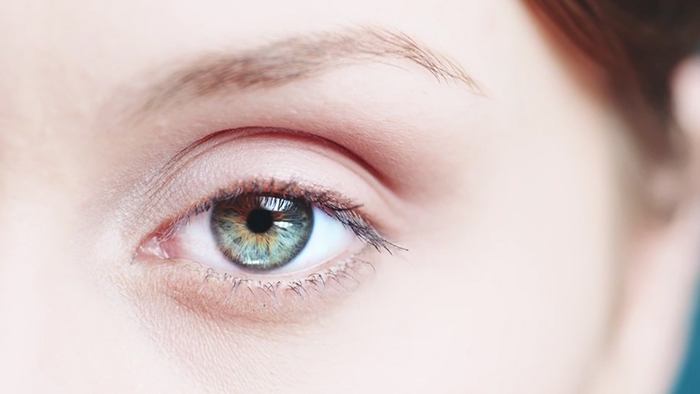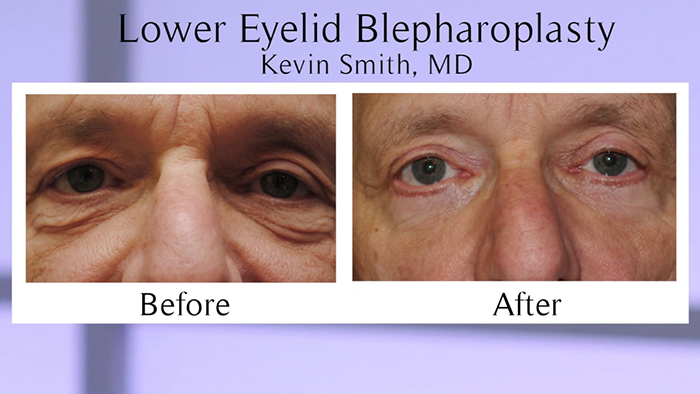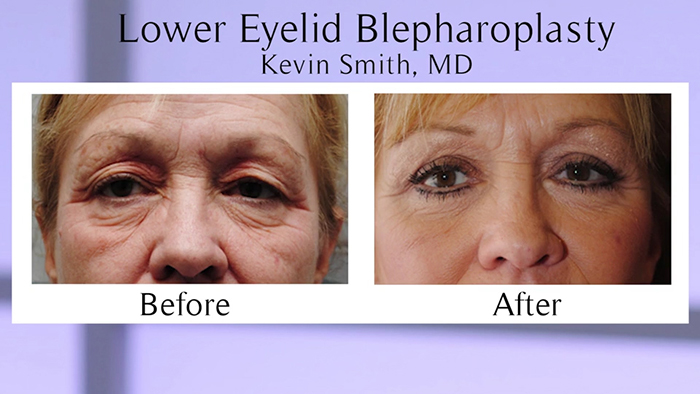Are you tired of being asked if you’re tired, even when you had a great night’s sleep? The solution to those heavy bags under your eyes is called a lower eyelid blepharoplasty. One of the earliest signs of aging, dark circles and bags under the eyes begin to show up for many people in their early thirties and continue to intensify with every passing year. Charlotte Plastic Surgery’s Dr. Kevin Smith shares a lesson on the anatomy of the lower eye to help us understand where those bags and circles come from, and how they can be sent packing.
“The eye is a very intricate structure,” says Dr. Smith, emphasizing the importance of choosing a board certified plastic surgeon when putting together a game plan to address any under eye concerns. The combination of anatomical and surgical expertise a plastic surgeon possesses is crucial in order to maintain the proper function of the eye while improving the appearance. “The most important thing we need to do, is to make sure the the eyelid functions properly,” says Smith. “We want it to look better, but we cannot disturb that function.”
by Anne Meyer
and Kevin Smith, MD
Eyelid Structures: FAT, MUSCLE, SKIN
Lower eyelid blepharoplasty involves three stages, each stage addressing one of the three distinct structures composing the lower eyelid.
Fat Pads
The bags under your eyes are mainly composed of small fat pads. The body protects the delicate eye inside the skull by surrounding it with fat, like built in shock-absorbers. As we age, fat pads under the eye begin to push forward through the other tissues, becoming noticeable. “That’s what gives us the puffiness,” says Smith. “When we make a gamenplan to correct a patient’s lower eyelid sagginess or puffiness, we generally look at the fat pads. If they have to be removed, we make a small incision inside the eyelid.” This type of hidden incision for removal of fat pads is known as a transcunjunctival approach.
Muscle
Inside the lower eyelid there is a layer of muscle. This muscle also plays a vital role in protecting the eye: it allows you to keep your eyes closed, squint, and blink. As we age, the eyelid muscle begins to stretch, sagging down from the corner of the eye and weakening. This adds more fullness to the bags that were created by the protruding fat pads. Unlike the fat, which is removed, the muscle is left in tact and re-positioned to where it used to live, before it stretched and sagged. “We strengthen it by tacking it back to the bone where it belongs, to improve that smooth lower lid sweep,” explains Smith.
Skin
The third component of the lower eyelid is the skin that drapes on top of the two lower layers. Skin, like muscle, stretches and sags with time and gravity. If necessary, Dr. Smith removes excess, saggy, wrinkly skin through an incision that is hidden just below the lower lash line. The remaining skin lies smooth over the muscle.
Recovery Time & Results
After a week-long recovery, Dr. Smith’s patients are free to return to work and regular activities. “I want my patients to come out of their week of recovery following a lower blepharoplasty and their friends say, ‘I don’t know where you went on vacation, but you look great. You look rested!’ I don’t want them to say, ‘Who’s your surgeon?'”
By choosing a board certified plastic surgeon with experience in the blepharoplasty procedure, a refreshed you is but one procedure away.

















Facebook
Twitter
Instagram
YouTube
RSS